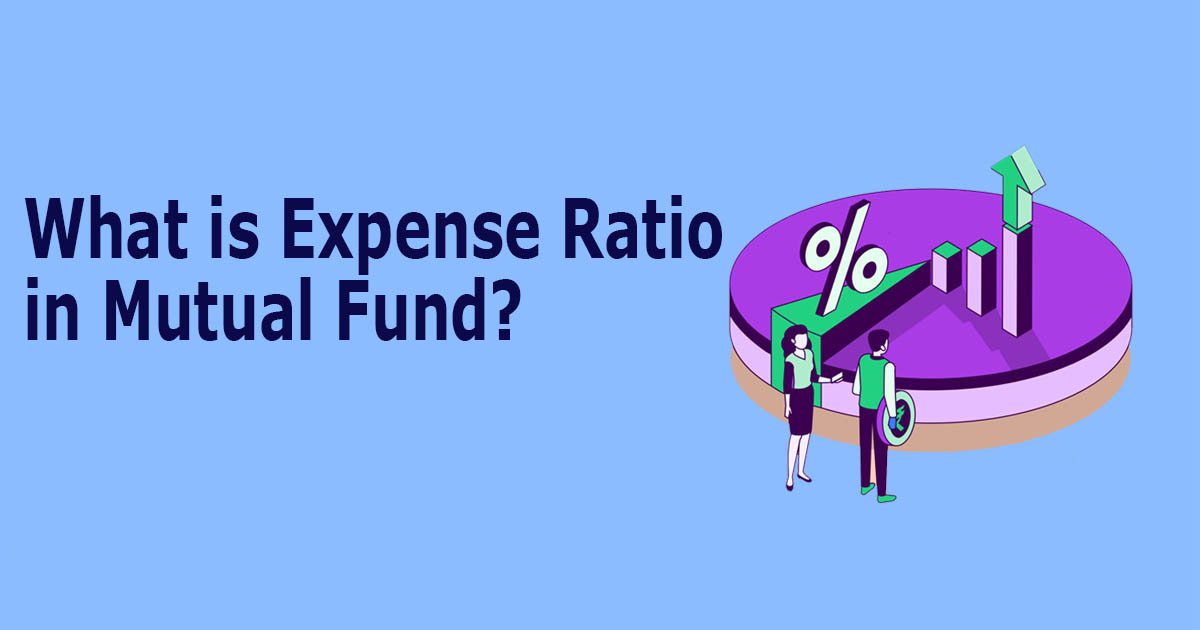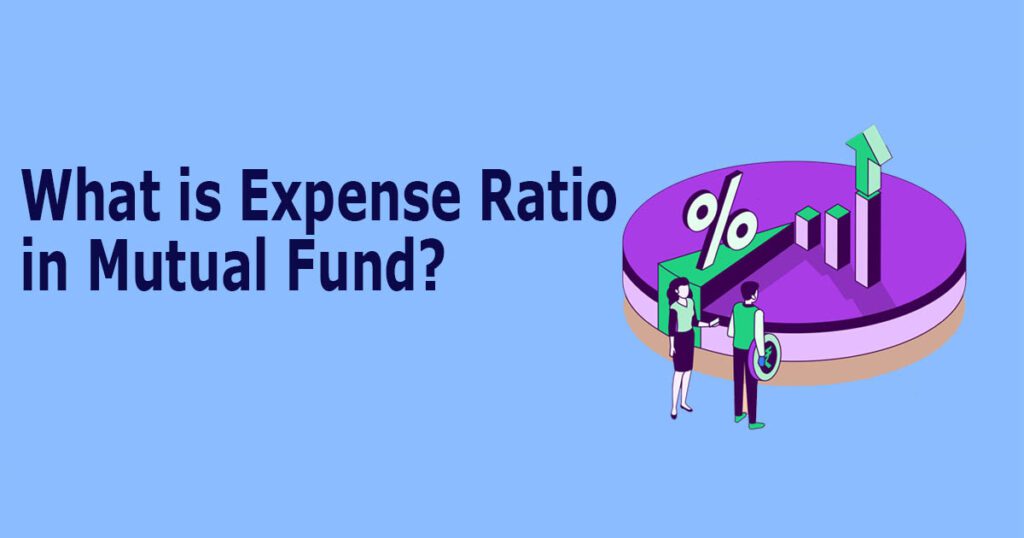One such financial tool that aids in long-term investment is mutual funds. after you retire, you will have extra money in your account in addition to your regular savings. Well, nothing is free, unfortunately!. Understanding the mutual funds expense ratio of is important as it affects the returns on an investment. It is important to compare the expense ratios of different mutual funds before making an investment in it. Expense ratio components, how it affects the return on a fund, limits set by Sebi, and its effects are discussed.

What Is an Expense Ratio?
The mutual funds are charged annual maintenance fee to cover their costs is known as expense ratio. It includes the fund’s annual operating expenses, such as management fees, allocation costs, advertising costs, etc.
In comparison, the amount set to cover expenses in large-cap mutual funds is less than the value of all assets. As a result, the relationship between expense ratios and mutual fund size is inverse.
How To Calculate Expense Ratio
Expense Ratio = Total Expenses / Average value of the Funds
Components of Mutual Fund Expense Ratio
Administrative Costs
The administrative costs of a mutual fund include maintaining records, providing customer service and support, emailing out information, and using other forms of communication. The management fee is the cost paid to the fund manager for their expertise in managing the fund’s investments. This fee can vary depending on the type of fund and its performance.
Brokerage Fees
Mutual Funds primarily offer the Direct or Regular plans. For Direct Mutual Funds, each transaction must be completed independently. Whereas in a regular plan, asset management firms employ brokers to handle all transactions involving the buying and selling of shares of a portfolio asset. Brokerage costs are a component of the expense ratio for mutual funds.
Audit Fee
Mutual funds are regulated by the Securities and Exchange Board of India. As a result, there are frequent audits, which aid in adhering to the SEBI regulations. The expense ratio includes any fees for audits, registration, transfers, etc.
Distribution Fee
The expenses incurred for marketing, raising awareness, and distributing mutual funds are included in the expense ratio. Direct funds have a lower cost component for intermediaries, while regular funds have a higher cost component. As we previously stated, brokers and distributors are involved with regular funds while none are with direct funds.
12B-1 Fee
The 12B-1 fee is what a fund manager charges you and the other shareholders for advertising in an effort to attract more investors. A company’s advertising expenses decrease as its number of shares under management increases because the cost is shared by all shareholders. Typically, 12B-1 fees cover two categories of costs:
Distribution Expenses
Service Expenses
Entry Load
Investors used to be charged a fee by mutual fund companies when they join the scheme. In general, this charge is known as load. When an investor joins, they must pay an entry load. However, SEBI stopped assessing an entry load for investments in mutual funds in August 2009.
Exit Load
Loan Exit Load is a charge imposed by Mutual Fund companies at the time of exit or redemption of mutual fund units. If an investor leaves the fund before a certain period of time, they will have to pay exit charge. This charge limits the number of withdrawals from the mutual fund scheme, allowing fund managers to manage the funds and take investment decisions without disruption.
How Does Expense Ratio Impact Funds Returns
Expense ratios show the annual percentage fee that the fund will charge to manage your investment portfolio. A small change in your expense ratio could end up costing you a lot of money. For example, if you invest Rs. 20,000 in a fund with a 2% expense ratio, you will need to pay the fund house Rs. 400 to manage your money. The per-unit cost needed to manage and operate a mutual fund is known as the expense ratio. The returns will be lower the higher the expense ratio of the fund. The TER will differ between mutual funds.
Expense Ratio Limit By SEBI
The guidelines set forth in Regulation 52 of the SEBI Mutual Fund Regulations must be followed when managing all AMC expenses. According to these regulations, the first Rs. 100 crore of average weekly total net assets may have a total expense ratio (TER) of 2.5%, the next Rs. 300 crore may have a TER of 2.25%, the next Rs. 300 crore may have a TER of 2%, and the remaining AUM may have a TER of 1.75%. Debt funds are limited to 2.25 percent. The Securities and Exchange Board of India also permits all mutual funds to charge a 30 basis point premium as an additional incentive to enter smaller towns (B15 Cities). These cities also pay an additional exit load charge of 20 basis points.
Importance of Mutual Fund Expense Ratio
Let’s discuss the significance of expense ratios in your mutual fund journey now that you have a better understanding of their meaning. The examples show that your returns will decrease the higher your expense ratio is. However, a higher expense ratio does not necessarily indicate a better mutual fund.
Direct funds have a lower expense ratio than regular mutual funds due to the distributor’s commission, which can lead to a reduction in returns.
The expense ratio can be an important factor when deciding which mutual fund to invest in. For example, if two large-cap equity funds A and B have similar holdings and investment objectives and expense ratios of 1.5% and 2%, respectively, the choice will be fund A. Debt funds have lower returns due to lower expense ratios, so a return of 7% with an expense ratio of 2% will be reduced to 5% and won’t be good enough to beat inflation.
Things to keep in mind regarding the mutual fund expense ratio
The most important idea is to understand the expense ratio and how it affects returns.
The amount you must pay the AMC to manage the fund is known as the expense ratio. Although a lower expense ratio is always preferable, make sure your investment goals match those of the mutual fund.
Regular plans have a higher expense ratio than direct plans, and actively managed funds have a higher expense ratio than passively managed ones. Due to the relative low returns of debt funds, it has a greater impact on them.
Investors should consider the expense ratio when selecting a mutual fund, as it can affect returns. A fund with a higher AUM is likely to have a lower expense ratio due to the management costs being distributed amongst more investors. Additionally, investors should consider other factors such as the fund’s performance history and investment strategy before making a decision.
Frequently Asked Questions (FAQs)
Why is the expense ratio important?
The cost of hiring a fund manager is covered by the expense ratio for the fund house. The funds must be allocated and managed by the fund manager.
What happens when the expense ratio is increased?
The returns increase as the fund’s overall expense ratio decreases. In contrast, as the rate of return is decreased by an increase in expense ratio, investors may feel duped.
Are expense ratios deducted automatically?
Yes, they are taken out of each investor’s returns automatically.
Can you avoid expense ratios?
If you are a mutual fund investor, you cannot avoid operating expenses because investing in any fund will result in them.
Does NAV include a fund’s expense ratio?
The NAV is computed after the expense ratio has been subtracted. To calculate the NAV for a given day, the expense ratio is deducted from the mutual fund’s assets’ value that day, and the result is divided by the number of outstanding units.







